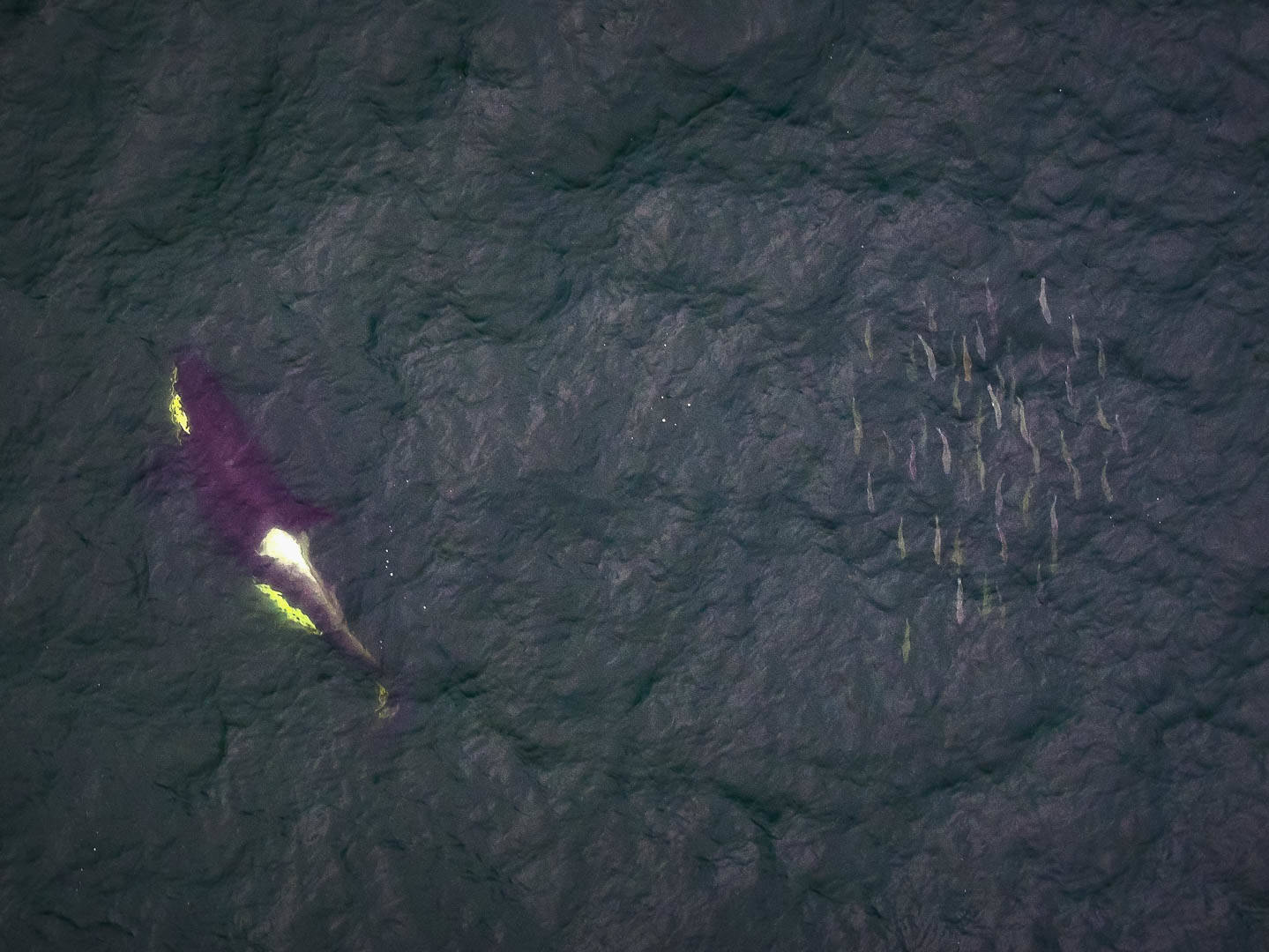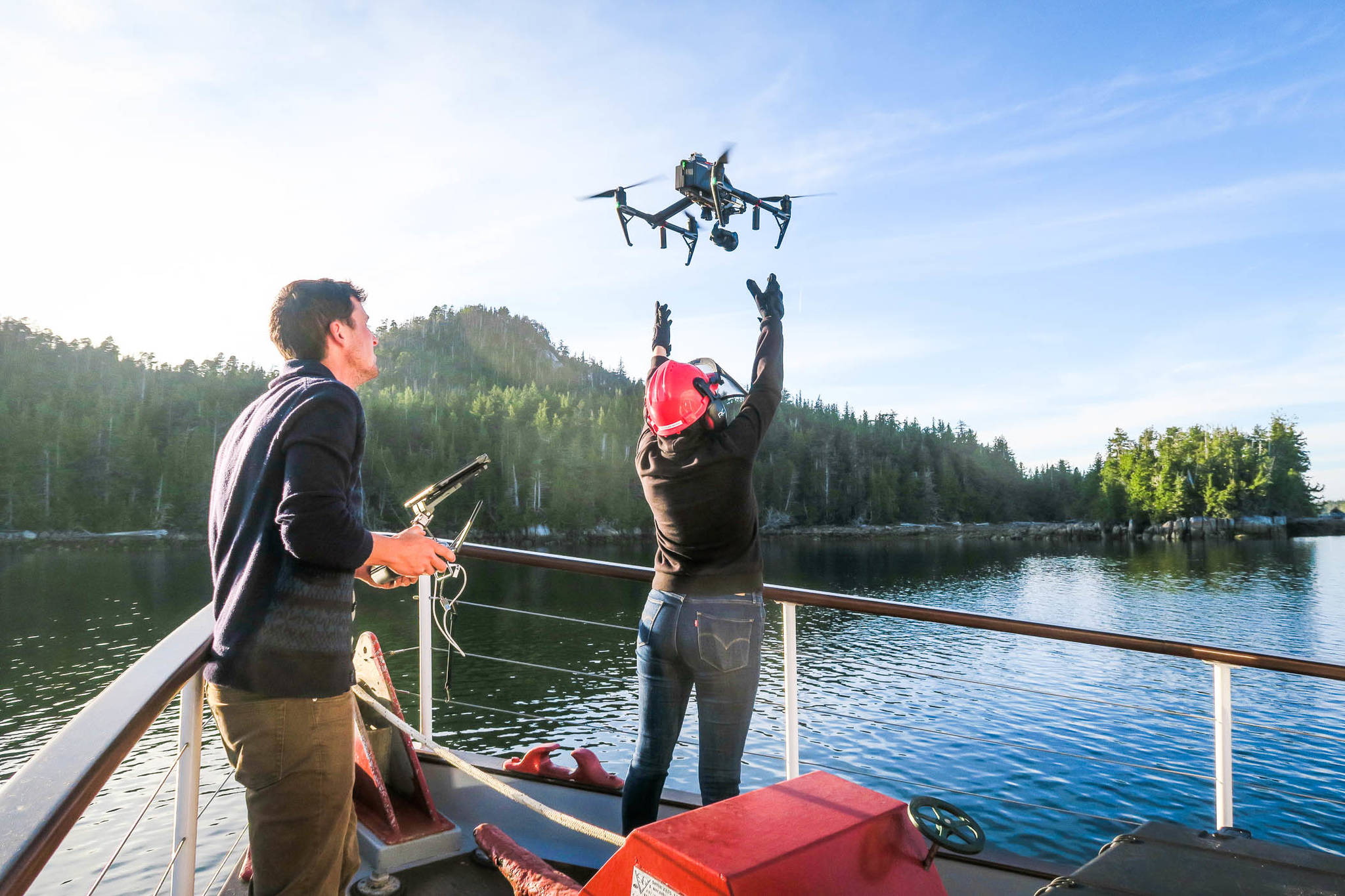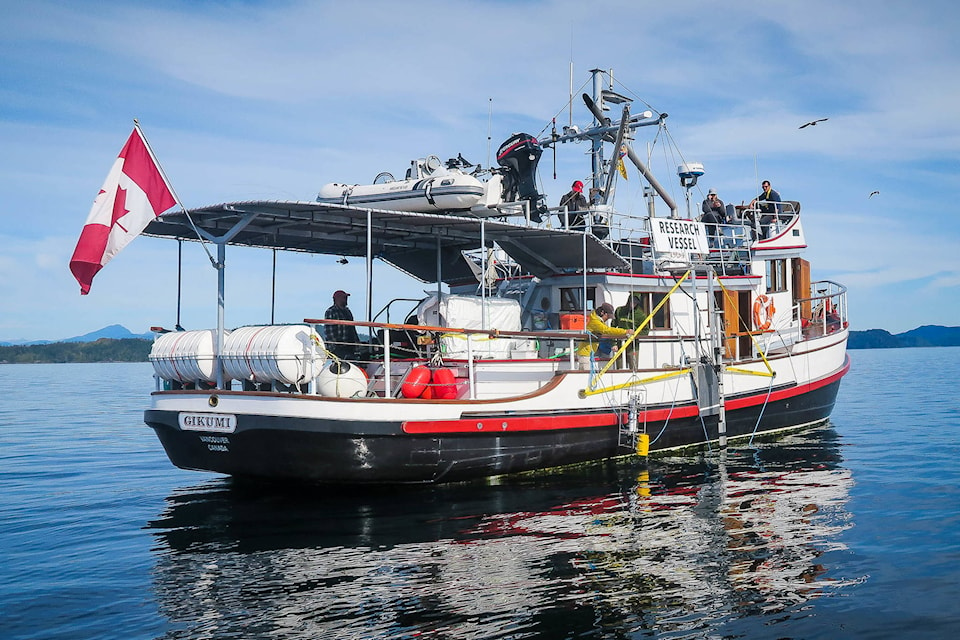Scientists at UBC are using aerial drones to study whether endangered southern resident killer whales are getting enough of their preferred prey, chinook salmon.
They spent three weeks in August and September monitoring pods of southern and northern resident killer whales in the Salish Sea and off the central coast of B.C.
Project lead Andrew Trites says because of a lack of historical data and behavioural observations of southern residents, the northern residents are an important point of comparison.
He says like southern residents, they feed primarily on chinook and chum salmon and face many similar threats from water and noise pollution, increased shipping traffic and reduced abundance of food but unlike their southern counterparts, the northern population has increased significantly.
The southern resident killer whales number 73 while their northern counterparts stand at about 300.
Over the coming months, the team will analyze their data and try to build a comprehensive picture of resident killer whale feeding behaviour to inform conservation and recovery efforts.
READ MORE: ‘Orcas are not for entertainment:’ Activist plans to disrupt West Coast whale watching
The Canadian Press
Like us on Facebook and follow us on Twitter


